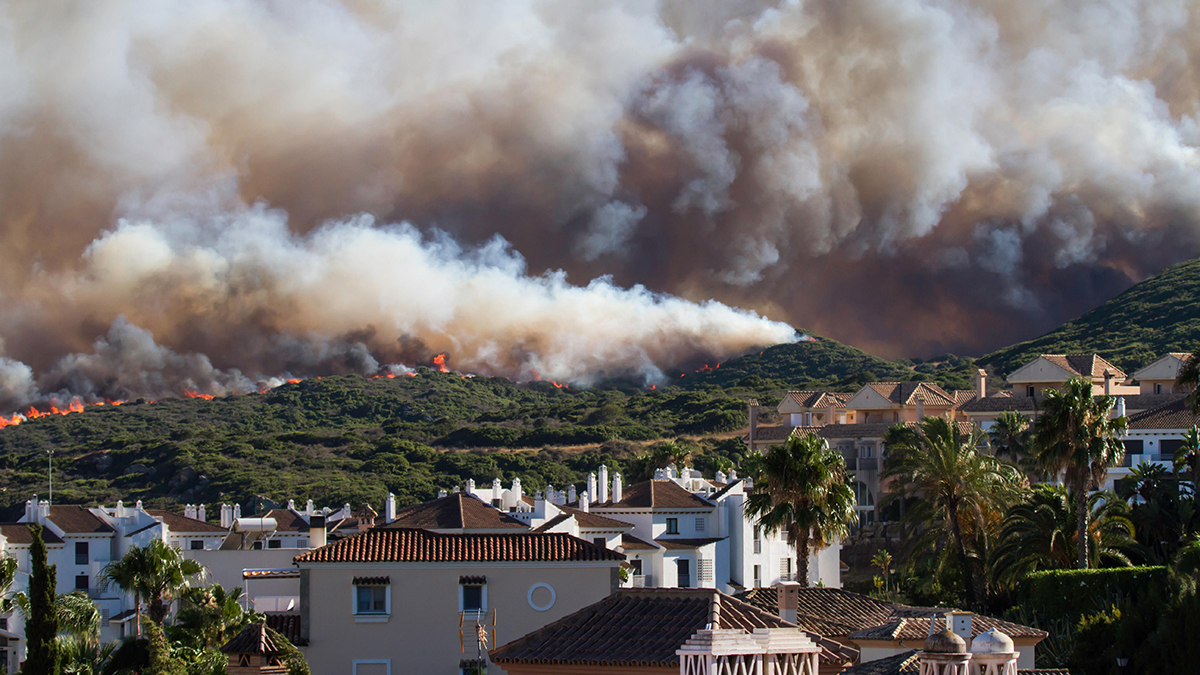US insurance regulators increase focus on climate risk mitigation
The NAIC's National Climate Resilience Strategy calls on regulators to take a greater role in educating the public about adapting and protecting their properties
The National Association of Insurance Commissioners has made property improvements central to its new climate resilience strategy, but some fear these efforts may not be enough
As several US states face insurance crises driven by extreme weather events, insurance commissioners are striving to strengthen properties against the resulting hazards.
However, some experts doubt these risk mitigation efforts will succeed in lowering insurance premiums and say regulatory initiatives do not address the issue that some areas have been rendered unsafe because of weather hazards.
The National Association of Insurance Commissioners (NAIC) has risk mitigation as one of the five key pillars of its first National Climate Resilience Strategy. The document, published in April, calls on regulators to take a greater role in educating the public about adapting and protecting their properties and it urges insurance commissioners “to advocate on where federal and state mitigation dollars… will generate the most benefits to insurance access”.
The NAIC’s plan arrives in the wake of storms, floods and wildfires that have withered private insurance markets in some US states. In Louisiana and Florida, hurricanes have blown numerous insurers into bankruptcy, while in California, capacity has dried up following years of extreme wildfires.
Across all three states, private insurance has become prohibitively expensive for many or even unavailable, forcing hundreds of thousands of people to take out policies with state-owned insurers of last resort.
Governments can encourage risk mitigation through tax incentives and financing, education, updating and enforcing building and land use regulations, and improving infrastructure.
Focus on resilience
Tim Temple, a Republican who was elected as Louisiana’s insurance commissioner last year, says: “We’re beginning to see a rapid shift towards a focus on resiliency in states across the country.”
In Louisiana, the state is providing funds for homeowners to reinforce their roofs, a policy that “enjoys broad, bipartisan support”.
Many states have regulations that require insurers to provide premium discounts to policyholders if they take steps to make their homes more resilient. “This is especially prevalent in hurricane-prone states,” Mark Friedlander, communications director at the Insurance Information Institute (III), says.
Louisiana, for instance, requires insurers to provide premium discounts for policyholders who improve their roofs to the Fortified standard.
The Insurance Institute for Business & Home Safety runs the Fortified programme, which provides guidelines for hardening roofs and has organised a network of qualified contractors. According to figures from the institute, close to 37,000 homes had qualified for the Fortified standard in May 2022, more than 80% of which were in Alabama. Temple says Louisiana is “following Alabama’s lead”.
“Louisiana and other states can do more than we’re doing now, but I think we understand that and are moving towards an even stronger emphasis on resiliency,” Temple says. “I’m looking for significant progress on widespread adoption of the most updated building codes and/or the Fortifed roof standard over the next decade, as well as for those codes to be effectively enforced.”
Temple’s goal is for residents to be able to “continue living and working in our coastal region with appropriately priced insurance coverage”.
"Part of the problem is elected leaders don’t like to talk about climate change as climate change. There is wide acceptance climate change is real, but property owners and voters resist the enforcement of existing risk mitigation measures"
Jenny Schuetz
Brookings Metro
However, Jenny Schuetz, senior fellow and urban economist at Brookings Metro, says simply hardening existing properties is insufficient.
The US needs to stop building homes, businesses and infrastructure in areas “we know are going to be at risk from climate events”, she says. Authorities will also need to evacuate people and move infrastructure from the most vulnerable zones, she adds.
Dave Snyder, vice-president of policy, research and international at the American Property Casualty Insurance Association, says risk mitigation efforts may instead encourage people to remain and continue building in these imperilled areas.
“Experience has shown when mitigation credits are designed to simply make insurance premiums ‘affordable’ and don’t reflect the risk, this typically creates a false signal in high-risk areas, as the true costs of insurance are masked or subsidised.”
This will ultimately compound the insurance affordability crises, since new storms or fires will bring “even higher losses, resulting in significantly higher insurance costs and less choice for consumers”, Snyder says.
Politics
In the US, decisions about land use are made by local governments, which Schuetz says lack the expertise, resources and political motivation to stop developing in high-risk areas. Local governments in the US rely heavily on property taxes, which makes it hard to refuse new developments, she adds.
Political considerations also limit what policymakers can do to mitigate climate-related perils. “In the south, part of the problem is elected leaders don’t like to talk about climate change as climate change,” Schuetz says.
In California, “there is wide acceptance climate change is real, but property owners and voters resist the enforcement of existing risk mitigation measures”, she continues.
“The fact insurance commissioners are elected officials in many states doesn’t help,” Schuetz says. This is the case in California, Florida and Louisiana.
As a representative body of insurance commissioners from both US parties, the NAIC itself must negotiate conflicting political interpretations of climate change and the role of government. The NAIC strategy does, for example, discuss climate risk, but not greenhouse gas emissions or their impact on global temperatures. The strategy “was a product of compromise”, Snyder says.
Measuring progress
There are also questions about how to measure the success of risk mitigation efforts. Friedlander says regulators can, for example, count how many homeowners sign up. “However, the biggest measure of success is to see how properties fare against hazards,” he says.
Bob Carey, superintendent of the Maine Bureau of Insurance, says his state is “at the beginning stages of working on risk mitigation strategies”. He says reinforcing structures can lower premiums, either directly or by reducing the size of losses carried by insurers.
Snyder says risk mitigation can save money – up to $11 for every $1 spent, potentially – and can also be a profitable investment. “States and local communities should also promote resilience benefits that cannot be quantified following a catastrophe, such as the loss of lives and irreplaceable family heirlooms, and for peace of mind,” he adds.
But Schuetz says there is no single metric for measuring whether a risk mitigation strategy has succeeded, because genuine risk reduction involves not just hardening existing properties, but also ceasing to build in risk-prone areas. “How do you measure things that aren’t constructed?” she says.
Schuetz suggests the federal government will need to develop common guidelines, adding data needed for effective mitigation is often held privately, and not available to governments and policyholders. “Private data is not a substitute for public data,” she says.
For states where extreme weather threatens to make private homeowners’ insurance unaffordable or unavailable – like California, Florida and Louisiana – risk mitigation will not suffice, Schuetz says. It might slow down the rate at which premiums increase, but real reductions would require relocations, she adds.




